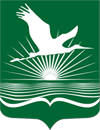Please use this identifier to cite or link to this item:
https://rep.polessu.by/handle/123456789/19381| Title: | Обоснование методики дифференцированного обучения детей младшего школьного возраста упражнениям с мячом |
| Other Titles: | Substantiation of the methodology of differentiated teaching of ball exercises for children of primary school age |
| Authors: | Арефьев, В.Г. Галай, М.Д. Мишаровский, Р.Н. Arefyev, V.G. Halai, M.D. Misharovskyi, R.N. |
| Keywords: | младший школьный возраст дифференцированный поход психофизиологические показатели упражнения с мячом primary school age a differentiated approach physiological parameters exercise with ball |
| Issue Date: | 2020 |
| Publisher: | Пинск : Полесский государственный университет |
| Citation: | Арефьев, В.Г. Обоснование методики дифференцированного обучения детей младшего школьного возраста упражнениям с мячом / В.Г. Арефьев, М.Д. Галай, Р.Н. Мишаровский // Здоровье для всех: научно-практический журнал. - 2020. - № 1. - С. 30-36 |
| Abstract: | В статье раскрыто влияние психофизиологических особенностей развития организма учеников младшей школы на результативность в упражнениях с мячом. С целью обоснования критериев, положенных в основу дифференцированного содержания физических нагрузок во время изучения упражнений с мячом согласно школьной программе по физической культуре для 1-4 классов, обработаны результаты ряда научных трудов, посвященных успешности формирования двигательного опыта от роста и развития организма занимающихся детей. В работе проанализированы, систематизированы и аккумулированы современные данные научных исследований и методических разработок дифференцированного обучения физическим упражнениям учеников младшего школьного возраста. Изучение литературных данных, а также проведенное исследование взаимосвязи специальной двигательной подготовленности и психофизиологических показателей, особенностей роста и развития детей данного возрастного периода позволили определить содержание и особенности методики дифференцированного обучения упражнениям с мячом детей младшего школьного возраста. Выявленная зависимость успешного овладения упражнениями с мячом от уровня проявления психофизиологических показателей подтверждает тот факт, что способность руководить движениями тесно связана с умением оценивать их во времени, пространстве, по степени мышечных усилий, способностью сохранять равновесие, а также способностью к длительной мышечной работе. Немаловажными являются индивидуальные особенности памяти и внимания. Представленные средства обучения основным приемам с мячом (ведению, метаниям, броскам, ударам и жонглированию), а также усовершенствования дальности и точности этих технических приемов обеспечиваются целенаправленным педагогическим влиянием на функционирование двигательного, зрительного и слухового анализаторов, а также на деятельность сердечно-сосудистой и дыхательной систем организма ребенка посредством специальных физических упражнений. Разработана методика развития психофизиологических показателей, являющихся наиболее информативными для обучения тому или иному упражнению с мячом в зависимости от возраста и пола. Представлено содержание физических упражнений для младших школьников с учетом соматометрических и психофизиологических показателей развития организма. |
| Description: | The article reveals the influence of the psychophysiological characteristics of the development of the body of elementary school students on the effectiveness in exercises with the ball. In order to justify the criteria underlying the differentiated content of physical activity during the study of exercises with the ball according to the school program on physical education for grades 1-4, the results of a number of scientific papers on the success of the formation of motor experience from the growth and development of the body of children involved are processed. The work analyzed, systematized and accumulated modern data of scientific research and methodological developments of differentiated teaching of physical exercises for students of primary school age. The study of literature data, as well as the study of the relationship of special motor readiness and psychophysiological indicators, the characteristics of the growth and development of children of this age period, allowed us to determine the content and features of the methodology of differentiated instruction in ball exercises for children of primary school age. The revealed dependence of successful mastery of exercises with the ball on the level of manifestation of psychophysiological indicators is confirmed by the fact that the ability to control movements is closely related to the ability to evaluate them in time, space, according to the degree of muscle effort, the ability to maintain balance, and the ability to long-term muscular work. Important are the individual characteristics of memory and attention. The presented teaching aids for basic techniques with the ball (dribbling, throwing, throws, kicks and juggling), as well as improving the range and accuracy of these techniques are provided with targeted pedagogical influence on the functioning of the motor, visual and auditory analyzers, as well as on the activity of the cardiovascular and respiratory body systems of a child through special physical exercises. A methodology has been developed for the development of psychophysiological indicators, which are the most informative for learning one or another exercise with the ball, depending on age and gender. The content of physical exercises for primary schoolchildren is presented taking into account somatometric and psychophysiological indicators of the development of the body. |
| Appears in Collections: | № 1 |
Files in This Item:
| File | Description | Size | Format | |
|---|---|---|---|---|
| Aref'ev_VG_Galay_MD_Misharovskiy_RN_Obosnovanie_metodiki_differentsirovannogo_obucheniya_detey_mladshego_shkol'nogo_vozrasta_uprazhneniyam_s_myachom.pdf | 468.34 kB | Adobe PDF | View/Open |
Items in DSpace are protected by copyright, with all rights reserved, unless otherwise indicated.
